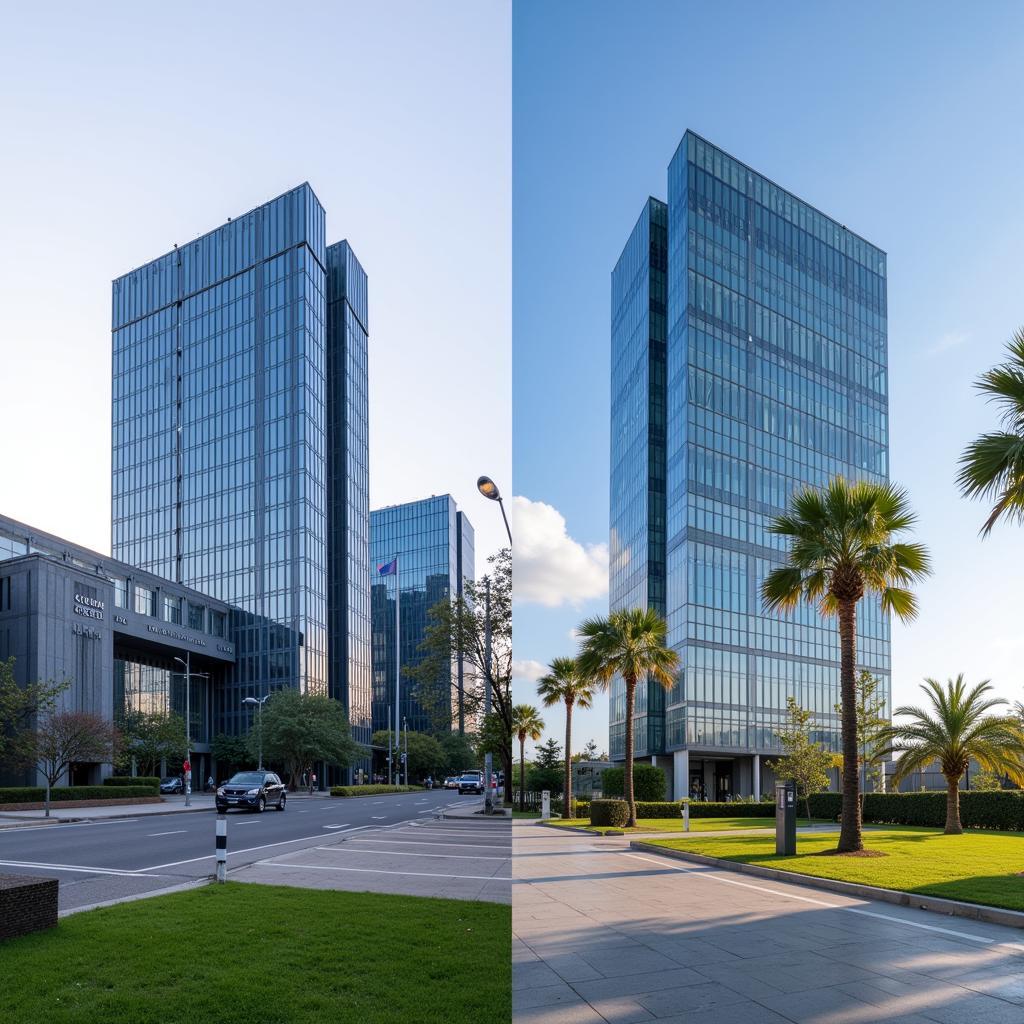The Association of Southeast Asian Nations (ASEAN) and the European Union (EU) often draw comparisons, particularly concerning their journeys towards regional integration. This article explores the key similarities between ASEAN and EU, shedding light on their shared goals, challenges, and the potential for future collaborations.
Shared Visions and Common Ground: How ASEAN and EU Mirror Each Other
Both ASEAN and EU arose from the ashes of conflict, driven by a shared desire for peace and prosperity. The EU emerged from the devastating aftermath of World War II, while ASEAN was born amidst the Cold War tensions in Southeast Asia. This shared history has instilled in both organizations a deep commitment to peaceful conflict resolution and regional stability. Both entities aim to promote economic growth, social progress, and cultural understanding within their respective regions. They both strive to enhance their members’ standing on the global stage through collective bargaining power and a unified voice. For instance, the EU’s common market and ASEAN’s free trade area reflect their commitment to economic integration.
 ASEAN and EU Flags: Symbols of Regional Cooperation
ASEAN and EU Flags: Symbols of Regional Cooperation
Furthermore, both organizations share a strong emphasis on multilateralism and international cooperation. They actively engage in dialogue and partnerships with other regional and international organizations to address global challenges such as climate change, terrorism, and pandemics. This commitment to multilateralism underscores their belief in collaborative solutions to shared problems.
Institutional Frameworks: Parallels in Structure
While the EU boasts a more integrated institutional framework, including a parliament, commission, and court of justice, ASEAN also possesses a structured approach to governance. The ASEAN Secretariat, based in Jakarta, coordinates the activities of various ministerial bodies and committees. Both organizations rely on consensus-based decision-making, reflecting a commitment to respecting the sovereignty and diverse interests of their member states. However, this consensus-based approach can sometimes lead to slower progress on critical issues.
 EU Parliament and ASEAN Secretariat: Hubs of Governance
EU Parliament and ASEAN Secretariat: Hubs of Governance
ASEAN: A New EU? Examining the Differences
While there are notable similarities, it’s important to acknowledge the key differences between ASEAN and EU. The EU enjoys a higher level of political and economic integration than ASEAN. For example, the EU has a common currency (the Euro) and a more centralized decision-making process. ASEAN, on the other hand, emphasizes national sovereignty and operates through a less binding framework. asean a new eu provides a more detailed analysis of these differences. You can also find interesting insights on asean and eu similarities and differences.
Navigating Challenges and Embracing Opportunities
Both ASEAN and EU face unique challenges. The EU grapples with issues such as Brexit and internal divisions, while ASEAN navigates complex geopolitical dynamics in the Indo-Pacific region. However, these challenges also present opportunities for both organizations to adapt and evolve. By learning from each other’s experiences and fostering closer cooperation, ASEAN and EU can strengthen their respective regional integration processes and contribute to a more stable and prosperous global order. For some interesting insights, you might want to look into the ASEAN Economic Community (AEC) and its parallels with the EU’s single market.
 ASEAN-EU Summit: Fostering Collaboration
ASEAN-EU Summit: Fostering Collaboration
“ASEAN and the EU, while geographically distant, share a common vision for regional integration based on cooperation and mutual respect. Their respective journeys, though distinct, offer valuable lessons for each other and for other regions aspiring to achieve similar goals,” says Dr. Anya Sharma, a leading expert on Southeast Asian politics and international relations.
“The key to successful regional integration lies in finding the right balance between national sovereignty and collective action,” adds Professor Michael Dubois, a renowned scholar of European integration. “Both ASEAN and EU are constantly striving to achieve this delicate equilibrium.”
Conclusion: A Shared Future of Cooperation
The Asean And Eu Similarities are striking, reflecting a shared commitment to regional peace, stability, and prosperity. While their paths and challenges differ, both organizations offer valuable lessons for each other and the wider international community. Continued dialogue and cooperation between ASEAN and EU can further enhance their respective integration processes and contribute to a more interconnected and prosperous world. Understanding the asean and eu similarities provides crucial insights into the dynamics of regional integration in the 21st century. You might also be interested in ase versailles or 5 letter words starting with t ending with ase. Finally, for those interested in medical comparisons, ase vs cml may provide further reading.
FAQ
- What are the main similarities between ASEAN and EU?
- How do the institutional frameworks of ASEAN and EU compare?
- What are the key differences between ASEAN and EU’s integration processes?
- What are the main challenges faced by ASEAN and EU?
- How can ASEAN and EU benefit from closer cooperation?
- What is the significance of ASEAN and EU similarities for regional integration globally?
- How does the history of ASEAN and EU shape their current objectives?
Need More Information?
For further assistance, please contact us:
Phone: 0369020373
Email: aseanmediadirectory@gmail.com
Address: Thon Ngoc Lien, Hiep Hoa, Bac Giang, Vietnam
We have a 24/7 customer support team ready to assist you.
